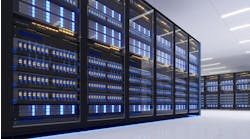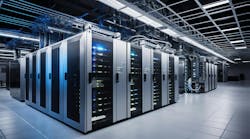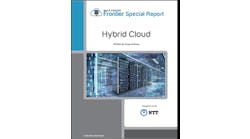Cooling the High-Performance Computing Center of Atlanta’s Hot New Tech Square
Vlad Friedman CTO at DataBank, explores data center cooling options, and highlights the rear door cooler system, which the company is implementing at its new ATL1 data center in Atlanta.
Vlad Friedman CTO at DataBank
According to Global Market Insights, on average, cooling systems represent 40 percent of total data center energy consumption. And yet, with minor exceptions, the data center industry has largely relied upon the same cooling techniques and architectures for the past three decades.
For the most part, cooling has not been the focus of great innovation in our business, and it’s more customary for data center providers to turn their attention to seeking the most efficient use of power. However, the one major factor in power consumption that data centers have little control over is the customers’ hardware. The second biggest factor in power consumption is Power Usage Effectiveness (PUE). PUE, a metric used to determine energy efficiency measurements, is calculated by comparing the total power used by a data center to the actual power delivered to a computing device.
As an industry-standard measurement, PUE indicates how efficiently a data center cools the waste energy coming off of computers, which is an area that data centers have ample room to innovate and find improvements. Traditionally, this has meant taking energy from the utility, and running AC units within the data center as efficiently as possible to cool the overall environment.
If it seems inefficient and self-defeating in purpose to take the heat that is generated from the consumption of energy in the form of computers, and consume even more energy to cool it in the form of AC, that’s because it is. But fortunately, there is a better way.
One innovative solution to cooling offers a unique approach. Waste energy that comes out of a server in a cabinet is exchanged by heating naturally cold water that runs through a closed-loop system in each cabinet rear door. The water is heated, and then rejected out of the building, as new naturally cold water is cycled back in to replace it, keeping the cabinet continuously cool. The result? A reduction of 90 percent in energy consumption, and an increase of 80 percent more real estate than traditional cooling systems.
Using this innovative rear door cooler system, it’s possible to cool 50 kW per enclosure, per rack, using 73 degrees Fahrenheit warm water. Moreover, this rear door cooling system can use that same capacity to cool up to 100 kW per rack with just minor changes in infrastructure.
This system alone would represent a major innovation in data center cooling, but the implementation can be taken even one step further.
Waste energy that comes out of a server in a cabinet is exchanged by heating naturally cold water that runs through a closed-loop system in each cabinet rear door.
In the typical data center environment, any heat removed with computer room air conditioning (CRAC) units is usually sent back to the central plant, exchanged for condenser water, and receded off the roof via typical heat rejection. However, instead of wasting the heat, it’s possible for the data center to convey it to an adjacent building’s boilers. This allows tenants to reuse and repurpose it to heat their offices in colder weather, thus further offsetting energy use.
DataBank will deploy this innovative cooling solution in its new ATL1 data center. DataBank’s ATL1 facility will be located in the new CODA building of midtown Atlanta’s Tech Square, a hub where university affiliates, researchers, startups and Fortune 500 enterprises will intersect. When Georgia Tech set out to create a high-performance computing center for their research institution, they turned to DataBank to build a data center environment capable of overcoming the inherent challenges that often accompany high performance computing (HPC) initiatives. ATL1 will not only be different from any other DataBank facility, but it will be one of the most advanced data centers in the country.
Meanwhile, Georgia Tech’s new HPC system will support data-driven research in astrophysics, computational biology and chemistry, health sciences, materials and manufacturing, and more. It will also be used to research the energy efficiency and performance of HPC systems themselves, which perfectly aligns with DataBank’s mission to continuously evolve the data center experience.
Vlad Friedman is the CTO at DataBank.





